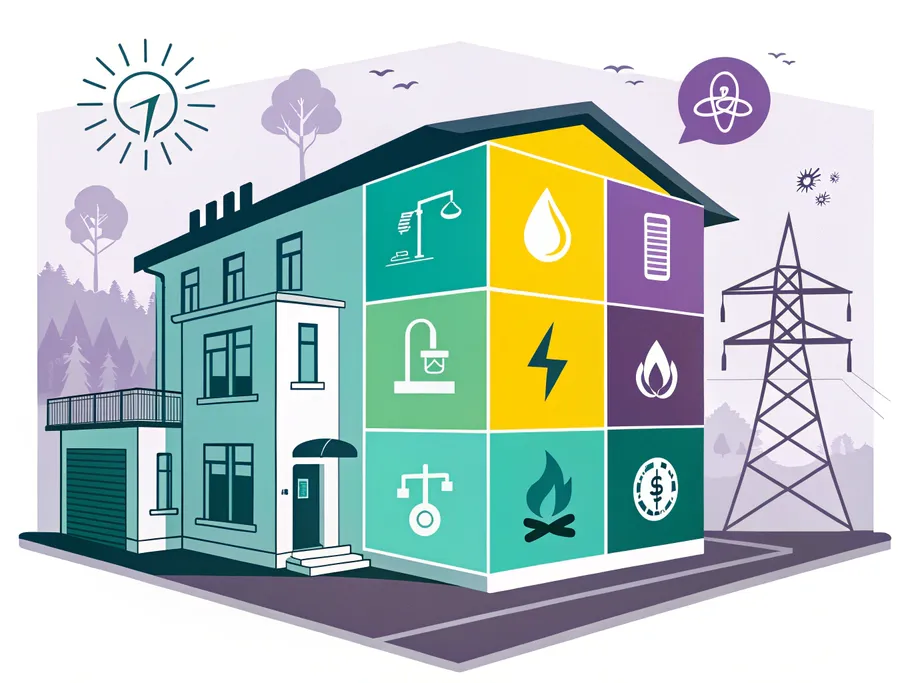Is utilities expense a debit or a credit? Great question! Before you start sweating over your spreadsheets, take a deep breath—we’re about to make this simple, and maybe even a little fun. 😃
Whether you’re a budding entrepreneur running a startup from your garage, a café owner who can’t function without a steady stream of caffeine (and electricity), or just someone curious about accounting for utilities, you’ve come to the right place.
Utilities like electricity, water, and gas are the lifeblood of any business. But when it comes to recording these utility expenses in your books, things can get a bit tricky. Record them incorrectly, and you might invite accounting goblins like errors of omission or the infamous complete reversal entry. Yikes!
So, is utilities expense a debit or credit entry? Stick around, and we’ll not only answer that but also dive into the nitty-gritty of what utilities expense is and how to nail those accounting journal entries. Trust us, by the end of this article, you’ll be recording your utilities expense examples like a pro.
Let’s plug into it 🔌

See also: Salaries Expense Debit or Credit?
What is Utilities Expense?
Let’s break it down: utilities expense is accountant-speak for the costs your business racks up using essential services provided by utility companies. We’re talking about electricity to keep the lights on, water to keep things running smoothly, natural gas, sewage services, and even telephone and internet (because let’s face it, businesses can’t survive without Wi-Fi these days).
Think of utilities expense as the lifeblood of your operations—the unsung hero that keeps your business humming. These costs are based on the amount you actually use during an accounting period and are recorded on the income statement as part of your operating expenses. They’re variable costs, meaning they fluctuate based on consumption. So, if you decide to leave all the lights on overnight like you’re signaling Batman, expect that utilities expense to spike!
Depending on the size of your utility bills, you might choose to maintain separate general ledger accounts for each type of utility—like electricity, water, and gas—or lump them all together into one glorious “utilities expense” account. It’s your call, but whatever helps you sleep at night (and keeps your accountant happy) is the way to go.
Allocating Utilities Expense Across Departments
Depending on how your company uses utilities, your accountant might allocate these costs to different departments. For example:
- Utilities used to help sell goods or services might be listed as selling expenses.
- Utilities used in administrative tasks could be logged as administrative expenses.
- Utilities used in manufacturing operations are recorded under factory overhead.
Sometimes, utilities expenses become part of a cost pool that’s divided up according to the units produced during the billing period. If not all units are sold, the expenses tied to the unsold units are listed as inventory assets, not immediately expensed. Sneaky, huh?
Is Utilities Expense Debit or Credit?
Drumroll, please… 🥁
Utilities expense is recorded as a debit. Shocking, right? (Pun totally intended.)
Here’s why: Expenses, in general, increase with a debit entry. Since utilities are expenses incurred to keep your business running, they naturally have a debit balance. When you record a utilities expense, you’re increasing your expenses (debit) and, indirectly, decreasing your owner’s equity. Why? Because expenses reduce net income, which in turn reduces equity. It’s the circle of accounting life!
Conversely, if you needed to decrease your utilities expense account—for example, if you received a refund from the utility company—you’d credit the utilities expense account. But let’s be honest, when was the last time the utility company gave you money back?
So, remember: When you pay for utilities, you debit the utilities expense account. It’s as straightforward as that.

Debit and Credit Journal Entries for Utilities Expense
Alright, time to put on your accounting hats and dive into some accounting journal entry examples. Don’t worry; we’ll keep it painless!
Typically, when your business receives a utility bill, you might have up to 30 days to pay it. In the meantime, you need to record the expense and the liability. Here’s how you do it:
When You Receive the Utility Bill
| Account | Debit | Credit |
| Utilities Expense | $XX | |
| Utilities Payable | $XX |
In this journal entry, you’re debiting the utilities expense account to record the cost incurred and crediting utilities payable (a liability account) to show that you owe money to the utility company. It’s like saying, “Hey, I used some electricity, and now I owe you.”
When You Pay the Utility Bill
| Account | Debit | Credit |
| Utilities Payable | $XX | |
| Cash | $XX |
When it’s time to pay up, you debit utilities payable to eliminate the liability (because you no longer owe the money), and you credit cash to reflect the outflow of funds. Bye-bye, money!
Examples of Utilities Expense Debit and Credit Journal Entries
Let’s bring all this theory to life with a practical example. Suppose your business receives an electricity invoice amounting to $2,000. Here’s how you’d record it in your books:
Recording the Utilities Expense Invoice
| Account | Debit | Credit |
| Utilities Expense (Electricity) | $2,000 | |
| Utilities Payable | $2,000 |
In this journal entry, you’re debiting the utilities expense account to recognize the cost of electricity consumed. You’re also crediting utilities payable (or accounts payable) to record the liability to the electricity supplier. Essentially, you’re saying, “I used $2,000 worth of electricity, and I owe this amount to the utility company.”
When You Pay the Utilities Expense
| Account | Debit | Credit |
| Utilities Payable | $2,000 | |
| Cash | $2,000 |
When you finally pay the $2,000 to the utility company, you debit utilities payable to eliminate the liability and credit cash to reflect the outflow of cash. It’s as simple as that!

Takeaways
- Utilities expense includes costs for essential services like electricity, water, gas, sewage, and communication services used by a business.
- It’s recorded as a debit because expenses increase with a debit entry and reduce your income finally.
- Properly recording utilities expense ensures accurate financial statements and helps avoid accounting errors.
- Utilities expense can be allocated to different departments or cost pools, depending on how the utilities are used within the business.
- Always remember to match your debits and credits in journal entries to keep your books balanced.
